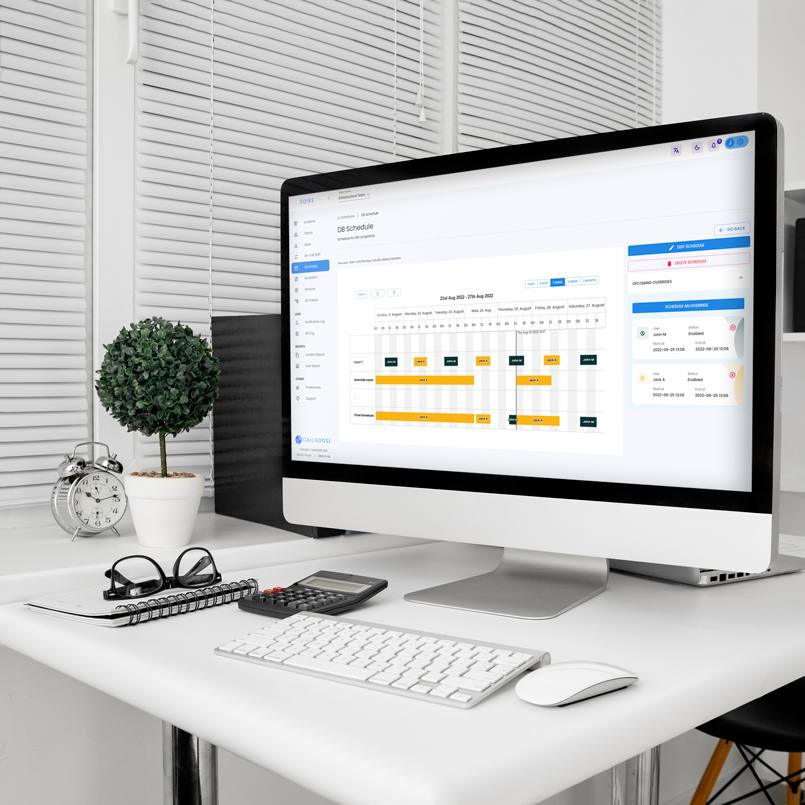Getting Started
Special
SINGLE SIGN-ON
Teams
Users
Escalation Policies
Service
Incident
Request
On-Call Shift
Schedules
Schedule Override
Logs
API
Webhook
Apps Integration
Reports
Preference
Profile
Automation
Self-Service Portal
FAQ
Automation Workflow
Creating an Incident Workflow in Callgoose SQIBS Automation Platform
This document provides step-by-step instructions for creating and managing an incident workflow in the Callgoose SQIBS automation platform. Incident workflows allow users to automate task sequences triggered by incidents, requests, or other predefined criteria.
Steps to Add an Incident Workflow
1. Access the Automation Section
- Navigate to the Automation section in the Callgoose SQIBS dashboard.
- Select the Automation Workflow.
2. Add a New Workflow
- Click on Add Workflow to create a new workflow. Make sure you are selected the correct Team/Global from the Select team drop down. The created Workflow will be under the selected Team/Global.
3. Fill in the Workflow Details
- Name:
- Enter a descriptive name for the workflow.
- Example: Server Maintenance Workflow.
- Description:
- Provide a detailed description of the workflow.
- Example: This workflow automates server maintenance tasks.
- Category:
- Select a category that best fits your automation workflow.
- Example: Infrastructure Automation.
- Always Consider as Success:
- If selected, the workflow will always be marked as successful regardless of the outcome of the actions.
- Otherwise, the result will depend on the outcome of the last action in the workflow.
- Service Related With
- Select the Service that this workflow is associated with.
- If the automation fails, an Incident will automatically be created under the selected service.
- When a Request is created for this workflow, it will also be linked to the same service for tracking and reporting.
- Define Custom Variables
- Add custom variables as needed.
- Example:
- Variable Name: ServerName
- Value Type: Text or Number (depending on the expected input).
- Usage:
- Custom variables can be referenced in arguments and will prompt the user for input when invoking the workflow.
- Example: Define ServerName as a custom variable. When running the workflow, the user will be prompted to enter the server name, without which the workflow cannot be initiated.
- Add Actions
- Action Types:
- Action: Select predefined or custom actions.
- Delay: Add a delay between actions to ensure dependencies are met before proceeding.
- Example: Add a delay if the next action depends on the successful completion of a prior action.
- Adding Actions:
- Click on the Actions dropdown and select Show Callgoose Actions.
- Callgoose Actions are predefined task-based automation actions provided by Callgoose SQIBS free of charge.
- You can view, modify, and use the provided automation code as needed.
- If you have created actions manually, you can find them under Teams Actions or Global Actions.
- Adding Arguments:
- If the selected action requires arguments, you need to add the arguments as specified for that action.
- Failure Behavior:
- Choose between:
- Continue: The workflow proceeds despite failures.
- Break Workflow: The workflow halts upon failure.
- Add Multiple Actions:
- Repeat the above steps to add as many actions as needed.
4. Save the Workflow
- Click on Save after adding all actions and configuring the workflow.
Running the Workflow
Triggering the Workflow
- To invoke the workflow, you need an incident or request.
- Incident
- Create a new incident manually or use an existing incident.
- Open the incident and click on Run Workflow.
- Select the desired workflow.
- Enter Workflow Options
- The workflow may prompt for input based on custom variables.
- Example: Enter ServerName when prompted.
- Choose additional options, such as:
- Resolve the Incident if the Workflow is Successful.
- Execute the Workflow
- Click on Run Workflow to start the process.
- Request
- Create a new Request manually and while creating select the desired workflow.
- Enter Workflow Options
- The workflow may prompt for input based on custom variables.
- Example: Enter ServerName when prompted.
- Execute the Workflow
- Click on Save to start the process.
The workflow can also be invoked from:
- Callgoose SQIBS Mobile Apps.
- Slack.
- Microsoft Teams.
- API
Monitoring the Workflow
All the detailed information about the workflow execution can be found from the Incident or Request where the workflow is executed. You can:
- View Timeline
- Click on Show Timeline to view detailed information about the workflow execution.
- View Workflow Logs
- Click on Show Workflow Log to view:
- Start and end times of the workflow execution.
- Detailed workflow logs, including actions and results.
Workflow Public Id
- Each workflow has a Public ID, which can be found in the Workflow Info section.
- This ID is used when running the workflow through an API.
- To view it, open the workflow card and click See Full Workflow Details.
Additional Notes
- Utilize tooltips available in the platform for detailed help on each option.
- Callgoose Actions are customizable, allowing you to modify the automation code to meet specific requirements.
Conclusion
By following these steps, you can effectively create and manage Automation Workflows in Callgoose SQIBS automation platform. Automation workflows streamline task automation, enhance efficiency, and provide robust monitoring capabilities.

